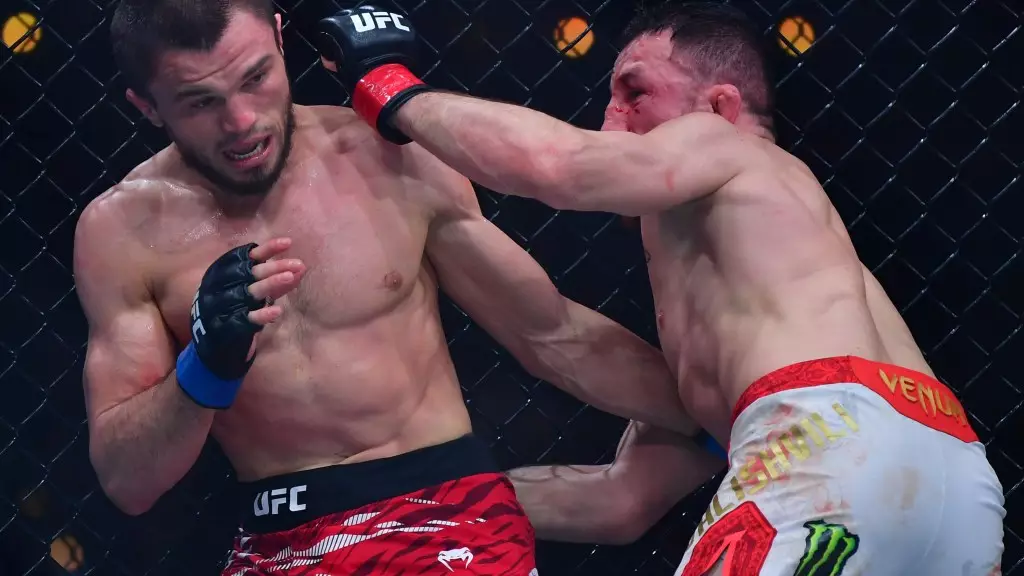Merab Dvalishvili, the reigning UFC bantamweight champion, has become a phenomenon in the mixed martial arts world not just for his technical skills, but particularly for his astonishing cardiovascular endurance. With a professional record of 19 wins and 4 losses, and a remarkable 12 wins in the UFC, Dvalishvili’s ability to maintain an unparalleled pace during fights leaves both fans and analysts in awe. His recent title defense against Umar Nurmagomedov at UFC 311 served as yet another testament to his remarkable stamina, as he pushed through challenging moments to secure victory.
Famed coach Firas Zahabi has weighed in on this mystery surrounding Dvalishvili’s stamina. In a discussion that captured much attention, Zahabi drew a parallel between Dvalishvili’s cardio and that of boxing great Floyd Mayweather, emphasizing that such endurance is generally a genetic trait. Zahabi noted, “His conditioning is just unreal,” pointing out that even among athletes suspected of performance-enhancing drug use, few possess the exceptional endurance displayed by Dvalishvili. Zahabi’s emphasis is clear: mere training sessions cannot replicate the natural advantages some individuals seem to possess.
Many aspiring athletes might wonder if they could achieve similar conditioning through rigorous training regimens or specialized conditioning programs. However, Zahabi argues that there’s a ceiling to what can be accomplished through training alone. Even top-tier training strategies can only enhance performance up to a certain point dictated by one’s genetics. Factors like VO2 max—the maximum amount of oxygen one can utilize during intense exercise—are influenced greatly by genetic predisposition. Zahabi insists that Dvalishvili’s training merely amplifies what is inherently available to him, suggesting that his genetic blueprint is what allows him to sustain an incredible work rate during fights.
This raises intriguing questions for coaches and fighters within the sport. While developing cardio and endurance remains a fundamental aspect of training in MMA, Zahabi’s insights suggest that understanding each fighter’s genetic strengths and limitations could lead to more personalized training approaches. Coaches might benefit from focusing on enhancing the natural attributes of their athletes rather than attempting to force them into a one-size-fits-all conditioning program.
At its core, Dvalishvili’s story is a reminder of the unpredictable nature of athleticism. While hard work and training are undeniably essential components of success in MMA, factors like genetics often play a critical role in an athlete’s ability to excel. Dvalishvili represents a fusion of natural talent and dedicated practice, resulting in a unique competitor who challenges our traditional understanding of fitness and performance in the sport. As the UFC continues to evolve, Dvalishvili’s exceptional conditioning may very well set a new standard for what fighters aspire to achieve, reminding everyone that while training is crucial, sometimes it is simply in the genes.

